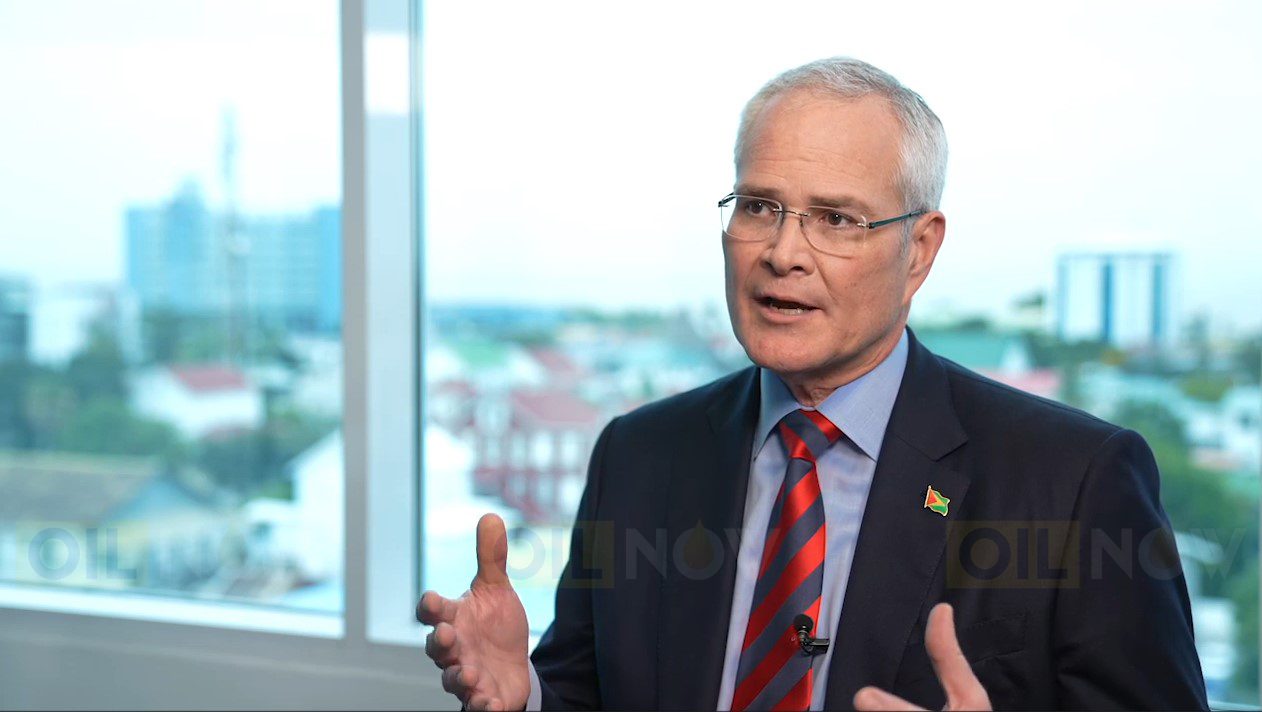The application of technology across a broad spectrum of its operations in Guyana has enabled ExxonMobil to deliver significant discoveries at an unprecedented rate since the company hit the first jackpot at Liza-1 just under seven years ago. This technology is also playing a key role in the cost-effective production of oil and maximising recovery of the resource.
During an exclusive interview with OilNOW on February 14 in Georgetown, Darren Woods, Chairman and Chief Executive Officer of Exxon Mobil Corporation explained that while technology does not eliminate all the risks, it plays a key role in the company’s exploration and production operations.
“Technology plays a very important role and it’s the portfolio of technology that the company brings the opportunities like that, that span not only the reservoir and understanding where the oil is but also how to most effectively develop that reservoir to maximize the recovery rate,” he said. “It’s the production platforms making sure that you can bring the production on to the lowest cost, it’s the reliability.”
The company has had close to a 90 percent success rate at the Stabroek Block where it has made over 25 discoveries since 2015, amounting to over 10 billion barrels of oil equivalent resources.
“There are a number of technologies that we apply across the entire development and the life cycle of development to ensure that we are cost-effectively developing these barrels and maximizing the recovery of this resource,” Woods explained.
One example is the company’s proprietary full wave seismic inversion technology which helps identify hydrocarbon reservoirs. This has played a major role in helping to deliver world-class discoveries in Guyana where production is set to ramp up to around 1 million barrels per day by the end of the decade.
“I think that’s a fairly unique capability, one the company has built over decades and has invested a significant amount of money over the years in improving our technology and capabilities in this space,” Woods said. “Fortunately, we are seeing the benefits of that here in Guyana.”
Nearly 50 years ago, ExxonMobil pioneered a technology called 3-D seismic imaging, which uses sound waves to form three-dimensional images of geologic formations. These images have become the industry standard for understanding subsurface geology and finding oil and gas deposits. Full Wavefield Inversion (FWI) is an integral part of the company’s exploration and development efforts and a signature part of its suite of seismic capabilities known as EMprise.
In the past, the industry could only utilize a portion of the data recorded in 3-D seismic surveys due to the high complexity of the seismic waves and the sheer quantity of data. Now, FWI has provided Exxon with the ability to better leverage all of the data from a seismic survey to produce high-definition images of the subsurface.




